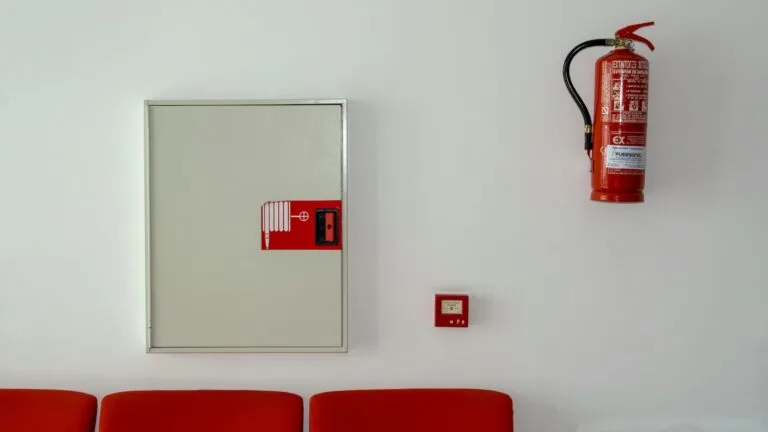

Fire safety is an essential consideration in every workplace, particularly in construction sites and industrial environments where the risk of fire can be significantly higher due to the presence of flammable materials and equipment. It’s crucial to properly select, use, and maintain fire extinguishers to protect everyone on site.
According to the Fire Industry Association, in 2022, 93% of recorded fires were extinguished by a portable fire extinguisher. Many people don’t make a big deal out of this achievement since the fires were relatively small – ones that most of us could handle without needing special training. Fire extinguishers allow us to manage these minor blazes and prevent them from escalating into massive infernos that require the expertise of professional firefighters.
On a construction site and industrial setting, fire safety is a collective responsibility. Typically, specific teams of individuals known as “fire wardens” or “fire marshals” receive training on how to operate fire extinguishers. While it’s important for all employees to know where fire extinguishers are located and understand basic fire safety principles.
Fire extinguishers are suitable for use in the following situations:
To effectively use a fire extinguisher, keep in mind the acronym P.A.S.S:
Fire extinguishers are classified and colour coded by label according to the specific types of fires they are meant to tackle. Selecting the right type of extinguisher is crucial. Here are the primary categories you may find on a construction site or in an industrial setting:
In the UK, the Regulatory Reform (Fire Safety) Order 2005 specifies the duties of employers concerning fire safety, particularly regarding fire extinguishers. This act covers assessment, provision, maintenance and training of fire extinguishers.
Immediate Response: Fire extinguishers provide a first line of defence against small fires, allowing for quick action before the fire escalates. This can help contain the fire, minimising damage and potentially saving lives.
Life Safety: In emergencies, having fire extinguishers readily available can protect employees and visitors, allowing them to escape and preventing injuries or fatalities.
Property Protection: Fires can cause significant damage to property, equipment, and inventory. Quick extinguishing can reduce financial losses and downtime caused by fire damage.
Regulatory Compliance: Construction sites are required by law to have fire extinguishers available. Compliance with fire safety regulations helps protect businesses from legal liabilities and penalties.
Fire Safety Culture: Having fire extinguishers and promoting their use fosters a culture of safety. Employees are more likely to be aware of fire hazards and prepared to respond appropriately in emergencies.
Fire extinguishers are an essential part of a company’s fire safety protocol as they provide the following:
Defender have been helping construction sites improve fire safety for over 49 years. Contact us today and discover how we can help your site.
